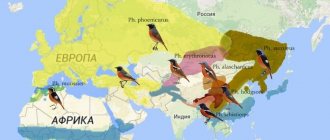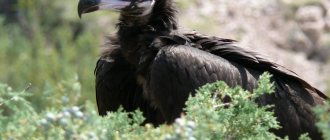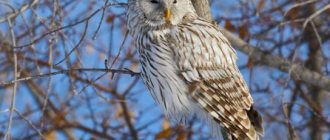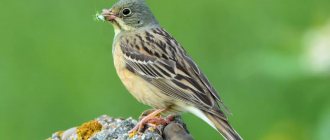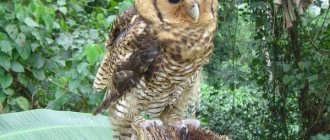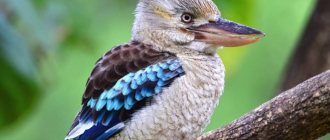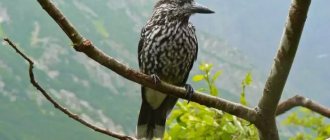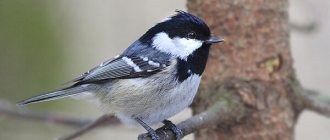Many of us are not even aware of the existence of such a duck as the scoter. Sometimes even the hunters don’t know her. Birds live in places where people are not frequent visitors. Even in Aksakov’s notes this breed is not mentioned. This species belongs to the order Lamelidae. And its individuals are considered the largest among ducks.
Many of us are not even aware of the existence of such a duck as the scoter.
Description and features
Of the waterfowl living on the planet, the most numerous is considered to be the duck family. This group of birds is also ancient. And there is indisputable evidence of this fact - the fossil remains of prehistoric ancestors.
Among the earliest finds is, perhaps, the North American one, the approximate age of which is estimated at 50 million years. Modern species, the number of which is about one and a half hundred, are united in forty (and according to some estimates even more) genera. Since ancient times, many of them have been tamed by people and were successfully bred to produce eggs, tasty meat, and soft, high-quality fluff.
But our story is not at all about domestic ones, but about wild representatives of the family, or rather about the rare bird scoter , found in Eurasia, as well as in the northern regions of Africa and the American continent.
From their relatives, ducks, such creatures stand out for their considerable size; They are famous for their special, though with some fishy taste, meat, rich in orange healing fat, and also have good quality, long-lasting fluff.
But all this is nothing compared to the uniqueness of such creatures of nature as representatives of an endangered species of winged fauna. The world population of them numbered, according to estimates ten years ago, no more than 4.5 thousand specimens, but these days it tends to decline.
Hunting for the described birds, in addition to the accidental death of careless individuals in fishermen's nets, became the determining reason for the decrease in their numbers. And therefore, in our country, shooting and catching this type of wild ducks is considered a prohibited activity. And the name of this species of the feathered kingdom has long been inscribed in the pages of the Red Book as endangered and rarely found in nature.
The common scoter reaches a size of up to 58 cm. Large-headed, massively built drakes (males), painted jet black with a subtle bluish tint, weigh about one and a half kilograms. But the “ladies”, that is, the ducks, are somewhat more elegant, and have a mass of three hundred grams less.
The feather outfit of females is dark brown or brown. The head of such birds is decorated with white spots above the beak and in the area of the ears; often similar markings border the eyes. In summer, representatives of both sexes have approximately the same shade of plumage; in other periods, ducks are lighter than black males, while they have dark brown eyes, but in contrast to them, the irises of drakes are light blue.
Due to the mournful tones with which nature spoiled them, such birds received the nickname “sad ducks.” This impression of gloominess is enhanced by the white edging of the eyes, which makes the gaze of such birds seem glassy, icy.
The characteristic features of these creatures are:
- a noticeable white mark on the wings on both sides, often called a “mirror” and formed due to the snow-white color of the flight feathers;
- the special structure of the wide beak, which has a pineal-shaped bulge at the base;
- The limbs are positioned strongly shifted back and practically growing near the tail.
By the color of the legs, among other obvious signs, it is easy to determine the sex of the bird. Females have orange-yellow paws, and their cavaliers have bright red paws, also equipped with well-developed swimming membranes.
The scoter's voice is not very melodic. Such winged creatures mostly produce quacks with squeaks, hoarse or hissing sounds, sometimes reminiscent of the cawing of crows. The drakes seem to sigh for a long time with a clicking accompaniment.
The ducks scream loudly and sharply, mostly while in the air. Such birds nest mainly in northern Europe, where they settle in many of its regions, from Scandinavia to Siberia.
Often, from unfavorable places in cold times, they strive to move somewhere where it is warmer, for example, they winter on the waters of the Caspian, Black and other seas of the continent. These representatives of the fauna live year-round in the mountain lakes of Armenia and Georgia, as well as in some other places.
Description of the bird
The common scoter is in the Red Book of Kazakhstan, Bashkortostan, Kurgan region, and the Middle Urals. This is a waterfowl from the order Anseriformes, the duck family. It is also called the Siberian scoter.
What does it look like
It is similar to the singa, but the physique is more massive. The head is held vertically, with the chest thrust out. The neck is very short. The beak is large, swollen in the middle part. The body is sixty centimeters long, the wingspan is almost a meter. Weighs about one and a half kilograms.
The color of the feathers is black, with the exception of a white dot above the upper eyelid and under the eye. The beak of males is 5 cm, in females - 4 cm, wide, swollen in the middle with well-defined nostrils. The breeding color of males is black with a bluish tint on the head and back.
The summer color of the male is slightly lighter, brown. The legs of the male are red, the legs of the female are dark yellow. The female is brown in color, with white feather tips on her belly. She has a white spot between her beak and eyes. Females have darker irises than males.
The beak of the male is red, the beak of the female is dark brown. Both sexes have a white mirror on the wings. Their hind toe has a leathery blade. When swimming, the tail hangs low. Unlike the bluefin, it has a white mirror and spots on the side of the head.
Varieties
The most famous species is the humpbacked scoter. In Latin its name is: Melanitta deglandi. So he was named in honor of the biologist from France K.-D. Deglana.
It differs in appearance from the common scoter by a very prominent growth on the beak, as well as by extending feathers from the cheeks to the beak. Lives in North America and Eastern Siberia. Winters in Korea and the Far East.
- Melanitta fusca fusca is another subspecies, lives in Scandinavia, on the Yenisei. Wintering takes place in the Caspian Sea.
- Melanitta fusca stejnegeri is also a species of scoter, lives in Asia and the Far East. They can often be found on the Lena River.
Character and lifestyle
Likes to live in the tundra and taiga, in steppe lakes and on sea coasts. This is a migratory bird. It gathers to nest in pairs on forest lakes overgrown with sedge. Turpans that do not want to reproduce can spend all their time in a flock, almost without leaving the water.
They fly low over a body of water, and in case of danger they immediately dive into the water. They love to swim. During feeding, it dives under water and very rarely appears on the surface. He sings ugly, croaks rudely: “kra-kra.”
What does it eat?
He loves shellfish, small fish, and larvae of aquatic insects, which he finds in and under water. At the same time, he dives to a depth of up to ten meters and gets food from there. You can stay underwater for a minute. Rarely comes onto land, where it feeds on the leaves of plants and shrubs.
Where does it live?
Based on the nature of its habitat, the bird can be classified as a northern group of waterfowl. The habitat is very extensive, stretching from Scandinavian Lapland to the border of the Okhotsk and Barents Seas, the Gulf of Tatar with the estuaries of the great Siberian rivers flowing into them (Lena, Yenisei).
The habitat includes the entire northeast of the Eurasian continent, Alaska, and the swamps of Canada. To provide itself with food, it settles in small swamps, lakes, ponds, preferably with banks overgrown with sedge and bushes. Recently, birds have shown interest in the more southern borders of their habitat, choosing to settle in urban water bodies.
Reproduction
Nesting occurs at the end of winter - beginning of spring when the ice and snow melt. Turpans, unlike other geese and ducks, have a unique approach to choosing a pair.
Making knocking sounds, the males dive into the water and, after swimming a few meters, emerge next to the chosen one. At the end of mating, the males rise on the wing and fly around the pond at a height of one or two meters.
Having chosen a place in dense thickets of sedge, the female begins building a nest. The building materials are branches and sedge leaves, which are insulated with its down. The clutch consists of five to eight plum-shaped eggs of olive or yellow color. At the end of the clutch, the males leave their partners and fly away in a northerly direction.
Only the mother incubates, feeds and protects the offspring. Hatching the eggs lasts almost a month and involves many risks because the nest is an easy prey for predators.
Among the most likely enemies of chicks are:
- fox;
- rats;
- raccoons;
- feathered predators.
Naturalists have noticed that in the event of the death of a duck, another female with a brood picks up the surviving ducklings, nursing both her own and the abandoned cubs. By mid-summer, the grown chicks learn to take off on their own (climb onto the wing), using the surface of the reservoir as a lifting platform.
The flights are short and in a straight line. Then they sit down on the water, needing rest. The length of the flight is increasing every day. By the end of summer, having changed the color of their feathers from striped to darker, the grown chicks are able to fly to their wintering place.
Natural enemies
The scoter has a better chance of surviving in a flock than single individuals. Together they can fight off a feathered predator (eagle, kite, golden eagle) attacking from above. On the ground, a fox can watch for a bird that is gaping or weakened from the flight. There are known cases when a predator by swimming (which is not typical for it) sneaked up on a sleepy bird.
In case of danger, the scoter makes hoarse loud sounds, flaps its wings, and the entire flock takes off. Also dangerous are hunters with dogs, who can drive a duck from the nest, which leads to the death of a clutch of eggs. A young duckling can be dragged under water by a catfish, and hatched chicks can be dragged underwater by a large snake.
Wintering
To winter, the bird flies away from its habitat 1000-1800 km in a southerly direction. Selects the shores of brackish lakes, the Caspian coasts are especially popular. In particular, the Volga delta, which offers in abundance both a wide expanse of water and an abundance of underwater food from a number of small fish, crustaceans and other invertebrate mollusks.
Turpans were also spotted off the coast of the Black and Azov Seas, namely the waters of the Yeisk estuaries, as well as places along the coast of the Taganrog Bay. During the winter, the bird tries to stay in a flock, not approaching the dangerous shore. For recreation, he uses any type of swimming equipment; he goes out onto ice floes, the edges of which are separated from the shore by the flow of channels.
Kinds
The genus of scoters is divided into several species. The birds classified in this group are largely similar in structure and behavior, in general terms corresponding to the description given above, but they differ only in some details of their appearance, as well as in their habitat. Let's look at some of them.
1. The humpbacked scoter, in terms of the color of its plumage, quite fits the description of the common scoter given above. True, in some individuals the feather outfit may have purple or greenish tints. And the white spots on the head often become very “blurry” and spread to the back of the head.
But the most important feature is the large nostrils, which makes the swelling on the nose, which is significant for all scoters, acquire even larger dimensions. That is why this variety is called hook-nosed.
As a rule, the nesting place of these birds is the taiga regions of Russia, and if they go on winter trips in search of warm places, they do not go very far. The Yakut lakes are considered the original homeland of such birds.
2. The spotted scoter is small in size compared to previous species, and such birds weigh on average about a kilogram. The color is similar to the outfit of its relatives described above. But, as the name suggests, the coloring of the nose is very interesting, made up of white areas on a black background with the addition of red, which sometimes creates funny patterns.
Such birds are quite quiet, making quacks and whistling sounds. They live in Alaska, inhabiting coniferous taiga forests, as well as large lakes in the United States and Canada. And their population there is relatively large.
It happens that feathered travelers fly to European countries in winter: to the seas of Norway and Scotland. How they overcome such vast distances, and how they manage to survive during storms and hurricanes in the ocean, is not yet known for certain.
3. The black scoter (singa) in behavior and external features is in many ways similar to an ordinary scoter, but the size is a little smaller (weight about 1300 g), and the color is slightly different, in particular the location and shade of the spots.
Among the distinctive features: a yellow spot in the area of the flat wide beak, as well as the absence of a white area on the wings, the so-called “white mirror”. In winter, representatives of both sexes are dark brown with the addition of gray tones in the head area and gray-white in the front part.
By spring, the drakes darken noticeably and dress in black breeding plumage with slightly noticeable white splashes. The bird's tail is pointed and long. The female's beak does not have a characteristic tubercle.
Such birds are found in many regions of Eurasia. In the west, their range begins in Britain, and passing through Russia, stretches to Japan. In the north it goes from Scandinavia south to Morocco.
Protection of the scoter
Turpans are rare, constantly declining in number, and therefore are classified by scientists as a vulnerable species. Observations of birds over three generations showed a decrease in the total population by a third.
However, recently the decrease in the number of scoters has significantly stabilized due to measures taken to protect this species. According to estimates made about ten years ago, the number of scoter individuals around the world was about four and a half thousand.
But over the past years, the population has already undergone a new decline. The reasons for this plight of large wild ducks have not been fully studied to date. This species is recognized as requiring protection in many regions of Russia and is included in the Red Book.
Lifestyle and habitat
Among the representatives of their family, scoters are rightfully considered the largest ducks in size. But in terms of body weight, they cannot compare with their lazy and well-fed domestic counterparts. Life in the wild made them more mobile, active, and therefore graceful.
Initially, these are residents of the north: the rocky islands of this part of the world, alpine meadows and arctic tundra. The scoter lives near bodies of water, mostly with fresh, but often with salt water. It tends to settle near deep mountain lakes, overgrown with sedge and dense reeds, in small, quiet bays warmed by the sun, as well as in coastal marine areas.
Such birds usually leave their northern nesting sites late, at the beginning of November, or, in extreme cases, at the end of October. They tend to move for the winter to areas with a more comfortable climate and usually fly to the southern coasts later than their neighbors, that is, other representatives of the winged fauna. And they return back around May, when the northern lakes are completely free of ice.
The scoter is a calm creature by nature, but it avoids people and not without reason. Since these birds, like all ducks, are waterfowl, it is natural that they hold and move through the water perfectly, while sticking out their chests, stretching their necks and raising their heads high.
Living in the seas, they are able to move away from the coast to considerable distances. Pursued by predators, they deftly dive and instantly disappear, hiding in the depths, as if falling down. But they cannot be called virtuoso flyers. They rise into the air heavily, slowly, and in normal flights they try to stay low enough.
Turpan - “sad” duck
Turpan is an unusual creature.
The first thing that strikes the eye of someone who sees her for the first time is her “mourning” appearance. Its impressive features are its almost charcoal black plumage , on which the white feathers stand out brightly. The duck also has very large nostrils and a humped beak with a bump.
Description
But the main distinguishing feature, which is why most people nicknamed her the “sad duck ,” are her icy white eyes.
They give the bird a bleak and mournful appearance. However, such external data does not at all affect her character. This is a completely calm and, so to speak, “harmless” feathered individual. The scoter is one of the largest ducks. Males reach a weight of up to one and a half kilograms, and the wingspan reaches 90 cm. Females are smaller in size. They weigh up to 1.2 kg.
If the males of the humpbacked scoter are black in color , then the females have motley-brown plumage, and their beak is slightly longer, without a hump. Their paws, like those of males, are the same orange, only not as bright.
By the way, the scoter has a lot in common with such a species of birds as the loon. Both the scoter and the loon have feet located close to the tail.
We also recommend reading:
Don't feed the ducks - they're still flying... Keeping ducks in winter. Keeping an Indian duck at home Gray duck: description of the bird, reproduction, nutrition Duck breeds for home breeding
Gallery: duck scoter (25 photos)
Habitats
The main habitat of scoters is the north of America and Eurasia.
The loon can also be frequently spotted in these areas. The duck mainly settles where there are large bodies of water or on islands where there is very lush and dense vegetation. The bird also feels good in places such as:
- coniferous forests;
- forest-tundra;
- arctic tundra.
But the scoter duck prefers to winter in the warmer environs of Russia, more precisely, on the Black or Caspian Seas. The loon often spends its winters in these same places.
In preparation for a long and cold winter, humpbacked scoters gather in flocks in advance. Most often these are small groups, but often ducks dare to travel long distances and in single pairs . When flying to warm regions, they often make short stops at fresh lakes.
Feeding birds
Due to the fact that the humpbacked scoter mainly lives where there is a lot of water, it mainly feeds on:
- small fish;
- shellfish;
- insect larvae.
However, they do not refuse plant foods, and this is:
- grain crops;
- grass;
- roots;
- many types of plants.
For the most part, these species of birds love a mixed type of food. Their basic diet is very similar to what loons like to eat.
Nutrition
The scoter duck begins to swim almost from birth, moving perfectly in the water element off the coast in shallow water. Water is not only the most important part of her life, but also her breadwinner. And such birds feed on aquatic plants, small fish, shellfish, as well as small midges and other insects hanging around lakes and bays. And this means that these feathered creatures are able to consume and assimilate both plant and animal, albeit small, food without problems.
Most often, in order to successfully feed on such a bird, it has to dive ten meters under water. But this is not a problem for excellent divers, which are what scoters are. At the same time, they can remain under water for several minutes without any difficulty or harm to the body.
They feel great and move in the underwater elements, rowing their wings and moving their webbed feet. True, there is not always enough food in the chosen place, then in search of it the birds have to wander, dreaming of finding areas rich in food.
Bird character
Despite the gloomy plumage, the duck is calm, non-aggressive, and not inclined to conflict with other bird species. Turpans are careful and never approach human habitation.
Expert opinion
Zarechny Maxim Valerievich
Agronomist with 12 years of experience. Our best country expert.
Ask a Question
Thanks to their ability to dive, scoters deftly escape from the birds of prey pursuing them: they fall vertically into the water and hide in its thickness. Having stopped at sea, they can swim at a considerable distance from the shore.
The duck obtains food in the water, dives deftly, and can dive to a depth of 10 m and stay there for up to a minute. But scoters fly heavily, slowly, take off with effort from the water surface, and stay close to the earth's surface in flight.
Reproduction and lifespan
The nests of such birds can be found not far from bodies of water: on the coasts, near rivers and lakes in thick grass, sometimes among colonies of gulls. In some cases, pairs are formed in late autumn or during winter migrations.
And therefore, birds often return from trips to their native lands, each having their own partner. But sometimes this process stretches until spring. And then, upon arrival at home after a forced seasonal movement, a considerable number of applicants can gather around a female, persistently seeking her favor.
The mating rituals of drakes courting their mates take place on the water. And they consist of flirtations, water dives and unexpected appearances from the depths. All this is accompanied by impatient, loud, inviting exclamations.
Ducks also scream, but only after mating. With these sounds, they make low circles above the ground, and then fly to the nesting sites, where they set up neat round baskets-houses for the chicks, decorating the walls and bottom with their down.
They soon lay a clutch of up to ten creamy white oval eggs. And having fulfilled their duty to nature and protected the nesting areas, the drakes fly away, leaving their friends alone to care for their offspring. And only single males huddle nearby in hopes of finding a mate.
Plucking feathers from themselves throughout the incubation period, which lasts about a month, as a result, the “ladies” take on a very shabby appearance, but soft, comfortable bedding appears in the nests.
In addition to arranging the laying site, the ducks are also busy protecting the occupied area from encroachment. Soon, tiny chicks are born, weighing no more than 60 g. They are covered with gray-brown down, although it is white on the cheeks and tummy.
Not all female ducks of this breed are responsible. Many people leave their cubs forever a few days after birth, no longer wanting to care for them. This is why the mortality rate among chicks is huge.
Trying to survive, they learn to swim and find food in the water from the very first days. But more often than not, babies die from the cold, trying in vain to stay warm, huddled together. But some people are lucky.
They find adoptive mothers, because not all scoters are careless as women. There are those who try not only for themselves, but also for their frivolous friends, and therefore up to hundreds of children of various ages follow them in the hope of receiving parental care.
By the end of warm days, the young animals grow up and soon become mature enough for independent winter flights. Young people cannot hope for help from the older generation.
By this time, parents and guardians have completely forgotten about their existence, and therefore, as a rule, they fly away before the young ones, not wanting to be a burden on the way. And the poor things have to save themselves, because whoever of them does not get to warm, food-rich places will die.
Up to a year old, young drakes have a color almost like that of females, that is, dark brownish, marked by dull white spots at the base of the beak. But everything changes when they grow up and become fully adults.
You can see what these winged creatures look like in the photo of a scoter . If they manage to withstand a difficult struggle for existence with a cruel world and successfully reach adulthood, then such birds can live for about 13 years.
Duck breeding
Duck pairs form in late winter or early spring. Birds arrive at nesting sites in pairs. If during the flight the females get separated from the flock, then the drakes slow down and wait for them. Group talk. To court females, males surround them. The drake dives underwater to quietly approach the chosen female. The next day, the fertilized duck circles low above the ground, quacks loudly, thereby signaling that it is about to lay eggs. The nest is insulated with its own down, so during the laying period it looks shabby.
The duck builds a nest right on the ground near the water. Often a scoter's nest can be seen in a colony of gulls. During the season, the duck makes one clutch - in the second half of June, and sits on it for about a month. The number of eggs varies among different types of scoters, but, on average, there are 7 of them. The eggs are oval, white or light beige. Hatched chicks are almost naked and weigh up to 55 g.
See also
Description and characteristics of Cherry Valley ducks, cultivation and careRead
Due to the late laying, the ducklings are still very small by the beginning of August. Males do not stay with females for long; they fly away to the molting site. Due to the weak development of the maternal instinct, females also leave the young early and reunite with the males a few days after the chicks peck. And the young animals have to survive and feed on their own.
Many chicks die from hunger and predators; some manage to join the offspring of other waterfowl species.
At the end of October, the surviving young flock together in flocks, preparing to fly south. There are no old ducks in the flocks, since they flew to the molting site earlier. But young scoters are well oriented in flight and do not get lost on the way to their wintering place.
Hunting for scoter
Such representatives of aquatic fauna are largely mysterious and little studied. In the Russian expanses, it is believed that only two species of these birds are found. In addition, representatives of another species, according to some information, wander and find temporary shelter on our territory.
This type of wild duck has been well known to the peoples of the north since ancient times. And ever since then, hunting for scoter has been considered an honorable occupation, and those who reach certain heights in it were declared self-sufficient and successful people.
The season began in those parts around June, when the birds, having returned from overseas countries, settled in their native places. Such birds tend to fly in flocks, moving high above the ground synchronously and amicably, often “talking” to each other.
These creatures are not famous for their intelligence, and hunters of all times sought to use this quality, because given the stupidity and gullibility of such winged klutzes, they are easy to lure. To do this, northern hunters, for example, imitated the bleating of a lamb, which attracted birds.
Some of the birds willingly attach themselves to specially made stuffed scoters , mistaking this artificial craft for their relatives. The carcasses of killed birds in the regions of eternal frost are usually placed directly on the icy surfaces of reservoirs and covered with turf or moss. They become suitable for carrying and storage when they freeze completely.
Nowadays, hunting for these representatives of winged fauna is punishable by law. And such a measure bore fruit, since the population size, although perhaps temporarily, stabilized.
Character and lifestyle
The scoter duck is a waterfowl and migratory bird. Birds prefer to inhabit the shores of small bodies of water and islands rich in thickets of thick grass. For the winter they go to the shores of the Caspian, Black and other seas located south of their usual habitat.
During such periods, in shallow coastal waters, wild ducks form flocks, going on long journeys, during which they prefer to stop at fresh lakes. Flocks of scoters can be small groups, but the feathered creatures also often make long journeys in solitary pairs.
During wintering at sea, these wild ducks feed well, gaining significant weight and accumulating fat deposits. But returning to their homeland in the spring, they often become the prey of northern hunters, who consider their dark meat tasty.
The down of this bird, capable of maintaining its qualities for a long time, is also highly valued. Spring hunting for scoters is great entertainment for lovers of this type of activity. But few hunters are aware of such feathered prey, since the described bird is not common in all regions.
The voice of a drake is extremely rarely heard by a stranger. But if you're lucky, you can discern a sharp clicking sound similar to a loud exhalation. Females usually scream during flight, producing low burr sounds.
Despite the gloomy appearance, the bird has a fairly calm character. Thanks to the webbed feet, the large wild duck swims well. And during periods of molting, the scoter even tries to stay in open water as much as possible.


